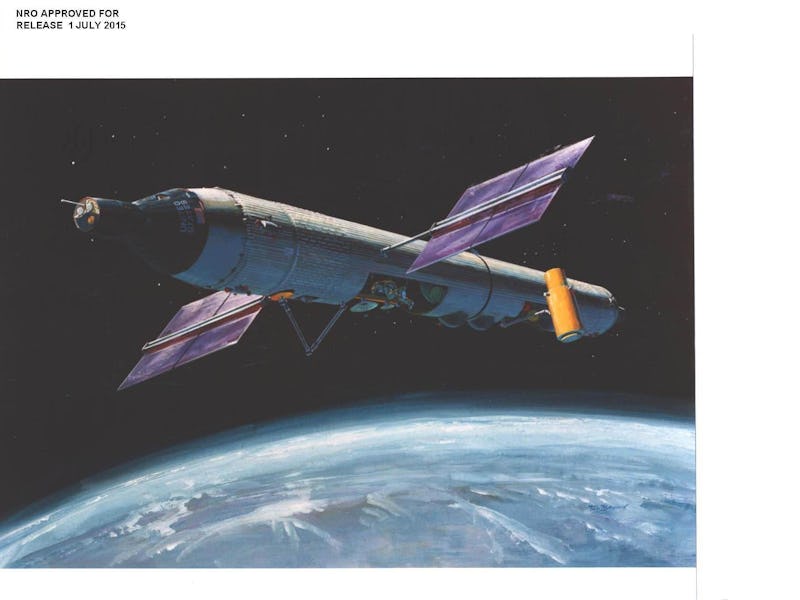That One Time the US Air Force Tried to Build a Spy Laboratory in Space
The Cold War was the perfect time to launch white elephants into orbit.

The Cold War was a boon for the research and development industry. The U.S. and the Soviet Union were investing almost unlimited capital in brinksmanship and no-bad-ideas oneupmanship. Case in point: The Air Force’s decision to design and build a manned reconnaissance station and launch it into orbit.
Just a few weeks ago, the National Reconnaissance Office declassified a huge swath of documents and images related to the Manned Orbiting Laboratory program. The incredible trove of information paints an amazing picture of a project that sounds too good to be true — yet came absurdly close to happening.
On December 1963, the MOL program was announced. The goal was to build a military installation in space and shuttle astronauts to and from it using the Gemini B spacecraft. American crew would stay on for 40-day missions and take pictures of the Soviet Union and other adversaries around the world. The U-2 would, presumably, go fuck itself.
An early scale model of the MOL
To the public, the MOL program was also supposed to be proof of concept for orbital space stations. This was, after all, well before Skylab. Still, the mission was ultimately military in nature.
An astronaut training in a live mockup of the MOL.
The military didn’t waste much time on process. A “successful” MOL test flight in 1966 was conducted using mockup made from a leftover Titan II propellant tank and a refurbished Gemini 2. Afterward, the U.S. began drawing up plans for a helium-oxygen space station fitted with powerful optics and cameras, a lot of cameras, for reconnaissance.
Then someone saw the price tag.
Over four years, the projected cost had skyrocketed from $1.5 billion to $3 billion as the Vietnam War ramped up. More importantly, engineers were able to develop unmanned spy satellites that surpassed the imaging capabilities of equipment that would be used on a MOL mission. Space station R&D was folded into the development of NASA’s Skylab, the first American space station. The program was scuttled on June 10, 1969, just about a month before Apollo 11 landed on the moon.
The MOL assembly and integration building.
Something like this is a thousand times more feasible to build and operate today than ever before, but the likelihood any country will be sending people up into space to spy on other nations is almost zero. Now we have machines and programs to do our dirty work for us. And we all know that will never go wrong.
Right?